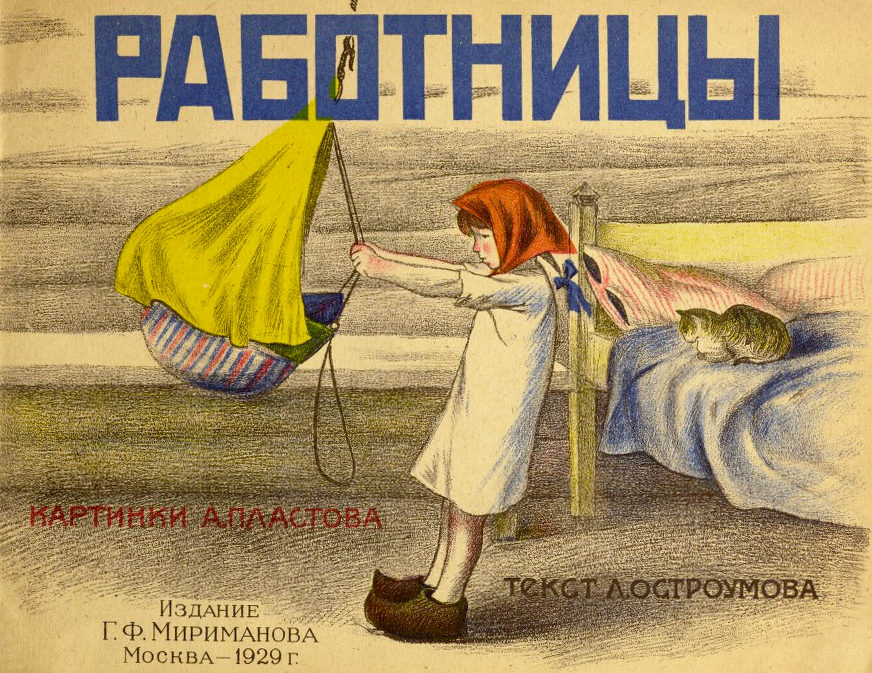 Communism always had major pedagogical ambitions: building a new society was also about promoting new forms of social imaginary and a new vocabulary of images. Lenin’s plan of monumental propaganda is well known and well researched; this symposium’s project is collaborative scholarly investigation of a less monumental but no less important and pervasive visual language developed by the socialist state for its children.
Communism always had major pedagogical ambitions: building a new society was also about promoting new forms of social imaginary and a new vocabulary of images. Lenin’s plan of monumental propaganda is well known and well researched; this symposium’s project is collaborative scholarly investigation of a less monumental but no less important and pervasive visual language developed by the socialist state for its children.
Soon after its revival in spring of 1929, Literaturnaia gazeta, the main newspaper of Soviet writers, published a lead article that outlined “new paths for the children’s book”. The newspaper noted that the new “young mass reader” required a new – contemporary – type of book: “practical, informative, concrete, graphic and documentary.” Given these requirements, Literaturnaia gazeta concluded, it was hardly surprising that book illustrators have become authors in their own right: “the language of images is much more comprehensible for the multilingual mass reader.”
It is precisely this process of amalgamation of text and image within the boundaries of the illustrated book for young Soviet readers that we want to examine in the project Pedagogy of Images: Depicting Communism for Children. As a part of the general desire to translate Communism into idioms and images accessible to children, books visualized ideological norms and goals in a way that guaranteed easy legibility and direct appeal, without sacrificing the political appeal of the message. Relying on a process of dual-media rendering, illustrated books presented the propagandistic content as a simple narrative or verse, while also casting it in images. A vehicle of ideology, an object of affection, and a product of labor, the illustrated book for the young Soviet reader became an important cultural phenomenon, despite its perceived simplicity and often minimalist techniques. Major Soviet artists and writers contributed to this genre, creating a unique assemblage of sophisticated visual formats for the propaedeutics of state socialism.
The project started in 2015, with a symposium that mapped out approaches to studying the dual verbal-visual representation of the Communist imaginary and sensibility. The symposium series also had a second purpose: ![]() to achieve a more nuanced awareness of the ways in which digitization of these works can enhance scholarly analysis of them and facilitate more exhaustive mining of the information contained in these rich graphic and verbal artifacts. Apart from an enrichment of the professional wisdom on these documents themselves, one of the primary objectives of the symposium and the larger series which it inaugurated was to help better inform projects for the digitization of these kinds of graphic-verbal materials.
to achieve a more nuanced awareness of the ways in which digitization of these works can enhance scholarly analysis of them and facilitate more exhaustive mining of the information contained in these rich graphic and verbal artifacts. Apart from an enrichment of the professional wisdom on these documents themselves, one of the primary objectives of the symposium and the larger series which it inaugurated was to help better inform projects for the digitization of these kinds of graphic-verbal materials.
As a whole, the project is conceived as a two-stage process that includes
1) a collaborative annotated catalogue of Soviet illustrated books and
2) research workshops aimed at producing an edited volume of articles on the pedagogy of communist images.
The catalog and the symposium as a whole are in this sense a sort of seed project with an ultimate view to the much larger enterprise of ongoing scholarly interrogation of the body of extant Soviet-era illustrated books for children and youth held in Cotsen and in other collections worldwide, and it is anticipated that one of the long-range consequences of the project will be the gradual comprehensive digitization of the Soviet-era Russian imprints in the Cotsen collection.
Organizing Committee:
Thomas Keenan
Serguei Oushakine
Katherine Hill Reischl
The Symposium is sponsored by:
Program in Russian, East European and Eurasian Studies
Princeton University Center for Human Values
Department of Slavic Languages and Literatures
Princeton Institute for International and Regional Studies

